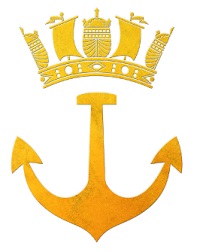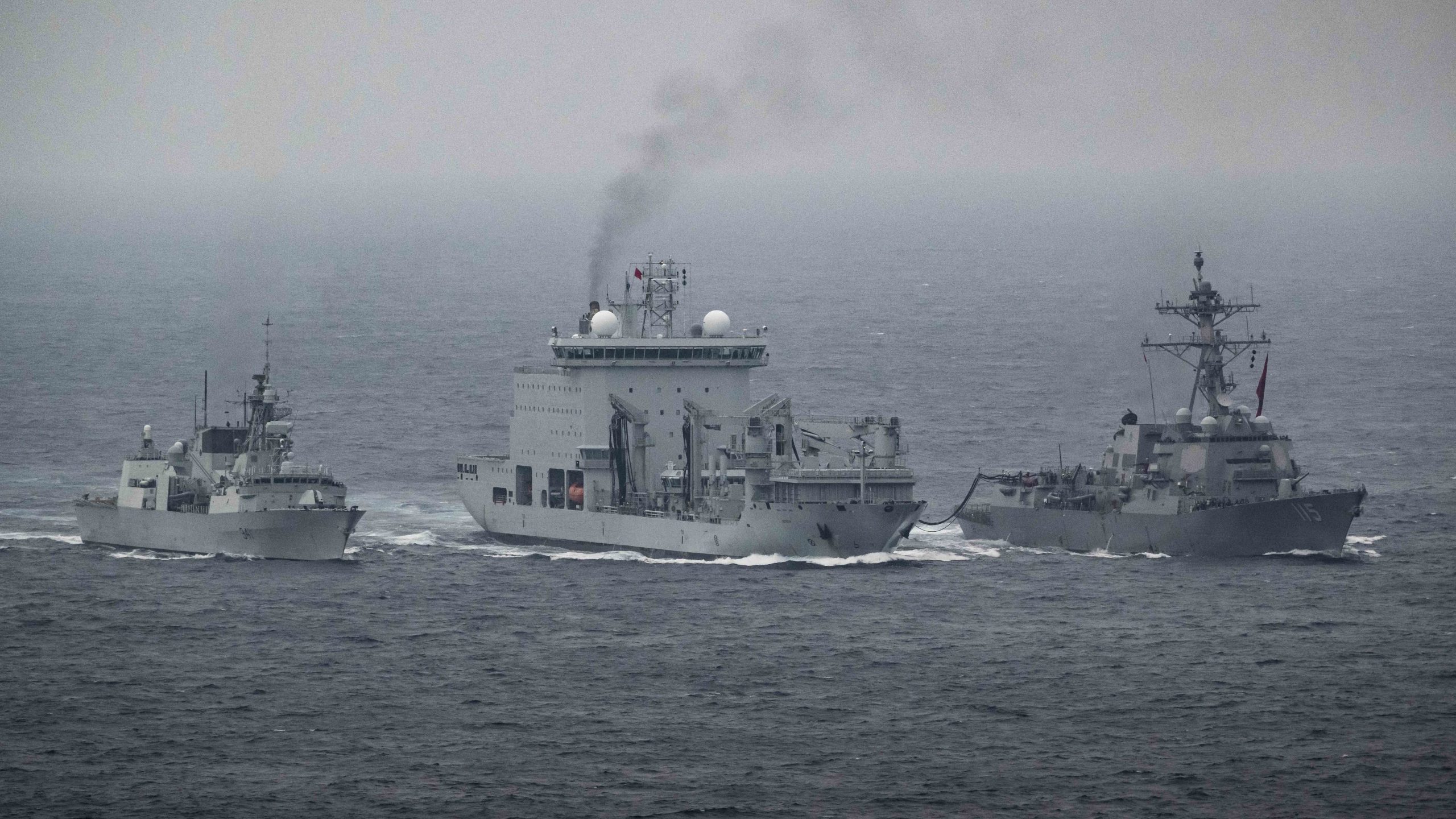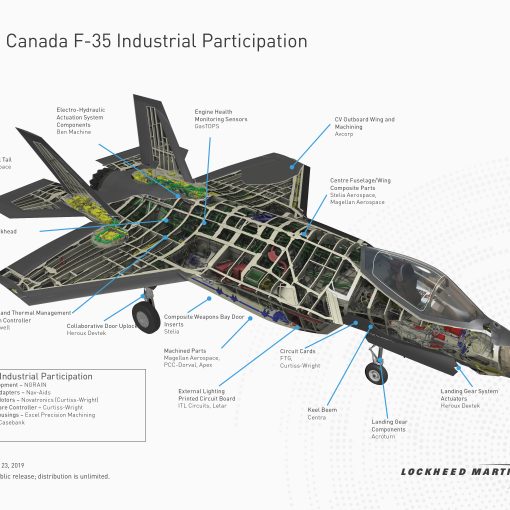By Les Mader, October 10, 2025
In The Globe and Mail article at the link below, Professor Franklyn Griffiths discusses Canada’s sovereignty, the Northwest Passage, global threats, and recommended actions by the Canadian government. During his discussion, he makes a number of points that I believe are consistent with the understandings of a large number of Canadians. These include:
- Donald Trump’s threat to annex Canada “… presents us with a real-life threat that commands attention and planning without delay.”
- One motivation for this threat is “… to improve his prospects for continued and unconstitutional occupancy of the White House after the end of his second term …”
- Another, related motivation is “… to normalize and brighten the outlook for autocratic rule and the deconstruction of democracy in the United States.”
Personally, I have believed the basic gist of these ideas since Trump refused to accept his defeat in the 2020 presidential election and increased his authoritarian rhetoric; as Maya Angelou once said: "When people show you who they are, believe them."
Given this situation, I feel that everyone discussing future Canadian military plans, equipment procurement, training, and resource allocation must bear Trump’s threat firmly in mind. The United States is the only country which can realistically invade and conquer Canada. With Trump as president, we must assume that such an action is more than simply a puerile plot in a Tom Clancy-like novel and plan accordingly.
The Forum’s readership is urged to allow this reality to shape their thoughts and published comments.
Image: HMCS Ottawa moves into position alongside MV Asterix prior to conducting a concurrent Replenishment at Sea (RAS) with USS Rafael Peralta during Indo-Pacific Deployment in the South China Sea on 6 October 2023. Photo Credit: Aviator Gregory Cole, Canadian Armed Forces Photo






7 thoughts on “The Critical Influence on Future Canadian Military Planning”
Professor Franklyn Griffiths’ recent article in The Globe and Mail paints a dramatic picture of a looming American annexation of Canada under Donald Trump — a claim that may attract headlines but fails to reflect the reality of our deep and enduring military relationship with the United States.
I recently sailed into a major U.S. West Coast port as part of a Royal Canadian Navy deployment. Over the course of that visit, we had no shortage of contact — both official and unofficial — with our American counterparts. From pier-side welcomes to joint briefings, to casual exchanges ashore, we were treated as honoured guests and respected allies. The camaraderie was genuine, the cooperation effortless, and the sense of shared purpose unmistakable. These were not the actions of a state harbouring designs on annexation; they were the interactions of trusted partners bound by history, values and common defence.
Yes, many of our American hosts had opinions about the rhetoric coming out of Washington — just as we in uniform sometimes have opinions about the political messaging from Ottawa. Politicians on both sides of the border say things that play well to their domestic audiences, and citizens tend to believe what their political masters tell them. But in the real world — the world of ships, aircraft, joint exercises and mutual commitments — the relationship between Canada and the United States remains one of respect, trust and practical cooperation.
Even Donald Trump, for all his bluster and disregard for political norms, left office when his term ended. That’s a critical distinction: rhetoric is one thing, constitutional reality another. The institutions of the United States — including its military — remain grounded in law and continuity. The idea that this same structure could pivot overnight to an invasion of Canada belongs more in a thriller novel than in serious defence discourse.
Rather than indulging in improbable scenarios, our focus should remain where it belongs: on improving our own capabilities, strengthening NORAD modernization, sustaining shipbuilding momentum, and maintaining the interoperability that has safeguarded the continent for generations. Our sovereignty is not weakened by partnership with the United States — it’s reinforced by it. The men and women I met on that West Coast port visit didn’t see us as subordinates or targets. They saw us as allies — and that’s a reality far more powerful than any political soundbite.
Good morning Richard,
Thank you for your comment.
I do not doubt that you experienced the welcome that you describe.
However, the people you met do not decide the USA’s actions. That is done by a small clique in the White House. The US military refusing to carry out the White House’s seemingly-legal orders would indicate that the Americans have far greater problems than I already believe. All Trump would need to do is portray his annexation orders as being in the vein of Grenada 1983 or Panama 1989 to give them the needed veneer of legitimacy.
Further, I do not believe that we can use Trump 1.0 as an indicator of what actions Trump 2.0 will take. Nothing in the past nine months supports such a belief.
I agree with your general description of how Canada must improve its military; see my commentary in CNR 21.1.
At the end of the day, we must not ever be lulled by sweet whisperings. We must work to chart our own path and be ready for the crisis, which I believe will occur around the American mid-term elections in 2026.
Ubique,
Les
Les, while I understand the concern, I think comparing a hypothetical U.S. action against Canada to Grenada or Panama isn’t a realistic parallel. Those were unilateral interventions in politically unstable, strategically peripheral states, not operations against a G7 partner, NATO ally, and NORAD co-defender whose forces are fully integrated into U.S. command structures on a daily basis.
In practice, any “annexation-style” order would immediately collide with institutional and operational barriers. The U.S. Navy and Air Force work shoulder-to-shoulder with Canadian counterparts, from joint operations under Second Fleet and NORAD to cooperative deployments in the Pacific and Arctic. The officers and crews I’ve sailed and trained with would view such an order as illegitimate on its face. These aren’t isolated militaries; they’re interwoven, both professionally and culturally.
The Grenada model simply doesn’t apply when both nations share command networks, intelligence pipelines, and continental air and maritime defence responsibilities. It’s not just that such an act would be politically suicidal, it’s that it would be logistically impossible without collapsing the very framework that underpins North American defence.
I agree wholeheartedly that Canada needs to strengthen its own capabilities, credible sovereignty depends on capacity, not sentiment, but I’d argue that our deterrence is best served through continued integration, modernization, and realistic investment, not by imagining scenarios that ignore how deeply fused our militaries already are.
Good afternoon Richard,
Thank you for taking the time to comment on my thoughts. You make many valuable points that would be completely valid in normal circumstances. In fact, in those circumstances, I would agree with you.
However, in the reality that we currently must endure, I feel that we have differing views on how much the USA’s political culture has changed. The key questions where I suspect that we disagree are:
– How many US military personnel have had their worldview massively skewed by listening solely to “MAGA media.”
– Whether this worldview would cause them to give their loyalty to Trump rather than to the US Constitution.
– Whether the remainder of the US military would resist efforts by Trump to act extra-constitutionally or whether it would “go along to get along” and supinely follow his lead and that of the “MAGA military.”
– Whether Trump will come to believe that his personal wellbeing depends on seizing autocratic power, perhaps facilitated by a “small, quick foreign war (in Canada) to rally the people around him” as so many dictators have done in the past.
Hopefully, the above concerns will never come to pass and Trump will give up power peacefully in 2029 without having completely shattered an already polarized American society. I do not believe, though, that we should assume that such a happy outcome is certain to occur. We must instead accept that the worst is at least possible and make (discrete) preparations to be ready for an outbreak of madness south of the border.
Ubique,
Les
Les, with respect, I think that line of reasoning gives too little credit to the US system and to our own preparations.
You raise valid concerns about the polarization within American society and the extent to which that may filter into the ranks of the US military. No one denies that the last decade has seen a troubling erosion of trust in institutions on both sides of the border. But where I diverge from you is in the assumption that the United States military, an organization defined by constitutional duty and professionalism, would ever become an ideological instrument of one man.
Having sailed into several major US ports over the years, from San Diego to Norfolk, I can say that the American sailors, marines, and coast guardsmen we meet are dedicated professionals. Their loyalty is to their Constitution, not to any transient political personality. The notion that a significant portion of the US armed forces would “go along to get along” in an illegal campaign, particularly one against a NATO ally and NORAD partner is highly improbable.
Our defence and industrial systems are intertwined at every level: joint aerospace production, NORAD modernization, Second Fleet cooperation, and day-to-day information sharing through CANUS channels. Even at the height of political friction, Vietnam, Iraq, or the Trump 1.0 era military-to-military trust never wavered. If anything, it deepened. That’s because the US system was built precisely to prevent one individual from weaponizing it against allies. The layers of checks, oversight, and institutional inertia that frustrate Washington politics are the same ones that make an impulsive “small foreign war” scenario unrealistic.
Yes, Canada must continue to build self-reliance in continental defence, surveillance, and Arctic capability. That’s just prudent statecraft, no matter who occupies the White House. But we should not confuse preparation with fear. There’s a fine line between readiness and reflexive mistrust of an ally whose cooperation has underpinned our security for eighty years.
Rather than assuming an outbreak of “madness south of the border,” we should be doubling down on institutional ties, NORAD renewal, continental infrastructure, and the quiet professional diplomacy that keeps militaries grounded when politics run hot. The best guarantee against chaos is not alarm, but confidence in the systems and people who have seen our nations through far worse storms.
At the same time, our own political leadership needs to look inward and recognize that stability begins with consistency. Canada should be pursuing a more formalized agreement with the United States regarding defence purchases, shared industrial capacity, and long-term investment in joint capability. That sort of understanding should have been in place from the start, as I’ve said in these forums before. Other nations have managed to align their procurement and investment frameworks with Washington to mutual benefit. Why not us? It’s time we showed the same seriousness about our own role in continental defence as we expect from our allies.
Reply to Richard Bungay @10:31PM 19 Oct 25.
Good afternoon Richard,
I guess we will have to agree to disagree wrt the threat that Trump poses to Canada and how much he will be able to suborn the US military for his own authoritarian purposes.
I am curious by what you mean when you say “Canada should be pursuing a more formalized agreement with the United States regarding defence purchases, shared industrial capacity, and long-term investment in joint capability.” Are you suggesting that we commit to “Buying American” when we make defence purchases? Such arrangements could easily set us up in a neo-colonial relationship with the Americans, especially as their relative decline as a great power continues, and even accelerates under Trump.
I am curious what other nations have managed to align their procurement and investment frameworks with Washington to mutual benefit. Can you provide examples?
Ubique.
Les
Good afternoon Les,
I agree that we may simply differ in how we perceive the Trump factor, but on the question of defence-industrial alignment with the U.S., I think there’s a pragmatic middle ground that’s already proven workable for several countries.
When I refer to a more formalized agreement with the U.S. on defence purchases, I’m not talking about blindly “buying American.” I’m referring to a structured framework similar to what the U.K., Australia, Japan, South Korea, and Norway have already done where shared R&D, reciprocal access to each other’s markets, and joint production offsets create predictable industrial benefits on both sides of the border. These aren’t neo-colonial relationships; they’re practical partnerships among allies with shared defence priorities.
A few examples:
United Kingdom – Through the F-35 program and AUKUS, the U.K. has secured thousands of domestic jobs and sustained its own advanced aerospace base (BAE Systems builds major F-35 components). Britain doesn’t lose sovereignty in this arrangement; it gains influence in shaping standards and technology development.
Australia – Their participation in AUKUS and U.S. shipbuilding partnerships has ensured local build work, technology transfer, and industrial investment—while still maintaining independent decision-making on fleet composition.
Japan and South Korea – Both have long-standing cooperative procurement and licensed-production arrangements with Washington, producing F-15s, F-16s, and now F-35s domestically under license. They gain capability, retain industrial capacity, and strengthen deterrence without subservience.
Norway – As a small NATO state, Norway has integrated closely with U.S. programs (F-35, P-8A, NASAMS) while ensuring local participation through Kongsberg Defence & Aerospace, again, a two-way street.
Canada, in contrast, continues to reinvent the wheel with each new procurement, negotiating ad hoc industrial offsets and suffering delays that serve neither sovereignty nor readiness. A transparent, rules-based defence-industrial framework with the U.S. one that guarantees Canadian build and sustainment work would stabilize our procurement process and improve interoperability across NORAD and NATO.
In short, it’s about partnership and predictability, not dependency. And if we’re serious about continental defence and revitalizing our shipyards and aerospace firms, aligning our industrial base with that of our closest ally is the logical step not a colonial one.